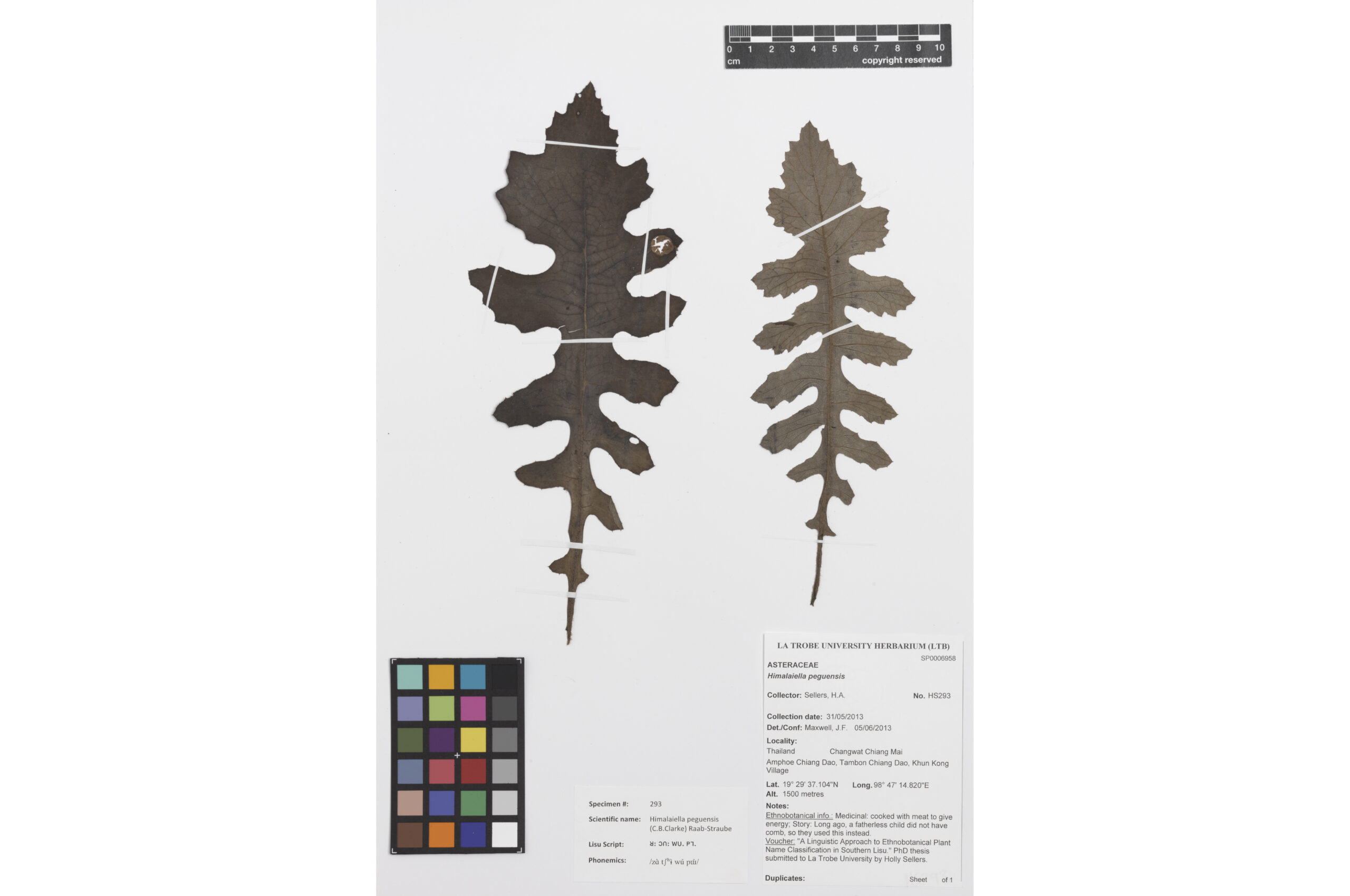Collections
Our collection consists of mainly vascular plants, ferns and marine algae.

The herbarium collection includes a diverse range of vascular plants, and a smaller number of ferns and marine algae. Taxa include a diverse range of vascular plants from the Victorian flora, plus particular strengths reflecting the research interests of past and current staff and students. The collection continues to grow as we incorporate new specimens.
Some areas of strength include:
- Myrtaceae – especially eucalyptus
- Proteaceae – particularly Grevillea and Western Australian Banskias
- Rainforest plants of Queensland
- Acacias from across Australia
- Alpine flora of the Victorian high country
We welcome visitors who wish to use the collection for reference.
For access: please contact the curator at: herbarium@latrobe.edu.au.
A particularly significant collection is ‘Plants of Northern Thailand – an ethnobotanical collection of Southern Lisu Speakers’.
This exciting collection features 300 specimens collected in Northern Thailand as part of Dr Holly Sellers’ PhD research in the Department of Linguistics. Each specimen includes not only the scientific name, but vernacular name in the Lisu language and their uses.
The Lisu people are a non-Thai minority culture living in the mountainous northern region of Thailand and most speak the Southern Lisu dialect, Southern Lisu plant names often encode information about the plants themselves, such as taste, effect, small and appearance, with one even describing a plants germination process.
The Lisu people’s traditional knowledge of plant names and their uses are at risk of being lost, despite being intrinsically linked to their cultural heritage and personal (and, for some, spiritual) wellbeing. In Thailand, very limited work has been undertaken on the traditional botanical knowledge of the Lisu, and no examination of their ethnobotanical folk taxonomy has previously been conducted. Holly created an initial corpus of plant names and uses in Lisu, including their scientific determinations, as well as investigated their folk taxonomy and other linguistic features. Her project collected plant information and specimens from two villages over two field trips.
This collection has been digitised – imaged at high resolution – with assistance of the Botany and Plant Ecology Society of La Trobe, and the University of Melbourne Herbarium. Access to the images is via the Australasian Virtual Herbarium.
All of the herbarium collection that has been fully curated has also been databased. Collections data are available via the Australasian Virtual Herbarium. Under Advanced Search, filter the results by herbarium to see what we have.